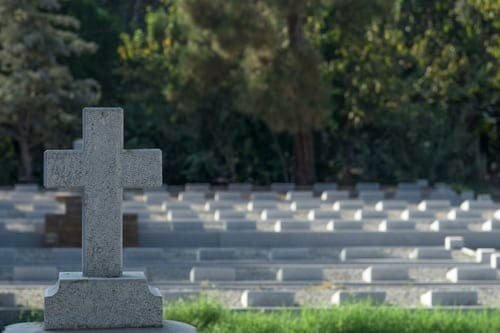The Christian Burial Mass is an aspect of the decedent’s burial customs. The wake is the first ceremony, proceeded by the funeral Mass, and finally, the rite of commitment. Funeral rites are religious practices intended to honor God. It’s also a moment to give thanks to God for the departed. To receive complete burial rituals, the dead must have been baptized followers of the Catholic Church.

The Mass that is an integral part of the funeral ceremonies has been referred to by different words in the past. One phrase that has been utilized is Mass of Resurrection. But most Catholic parishes ask that their parishioners refrain from using this name to describe it.
A Christian Burial Mass denotes that the deceased will be buried either soon after the liturgy or in the days that follow. Although the Catholic Church permits cremation, the Church’s official position is that burial is preferable. What is a mass of Christian burial? How is it planned? What are its stages? Let’s find out.
Planning For The Rites

Planning a mass of Christian burial requires a lot of details. You may be feeling sad during this time. This is where Christian empathy surrounds you. The Church supports you and accommodates you while selecting and planning the ritual and funeral process. Your Church can help you choose relevant scriptures, music, and prayers for the funeral service. Members of the family are motivated to engage in the planning stage. Family and relatives may participate in the rituals in the following roles, depending on parish tradition:
- Reader
- Usher
- Putting a Crucifix and the Bible on the coffin
- Bringing gifts
Christ, who has walked by you and your loved ones throughout life, will walk alongside you in your grief. The Church, too, will accompany you at this difficult time. Grieving families can express their thoughts and emotions in a compassionate, non-judgmental, and private atmosphere at bereavement programs.
You can organize the funeral rites of your loved ones with three preferences. These are as follows:
- The first preference recommends that the body of the deceased should be present at the Vigil service.
- The second preference suggests the presence of the body and then its cremation after the rituals if the choice to cremate the body has been made.
- The third preference suggests the commencement of funeral rites in the presence of cremated remains. The Church does not recommend it,but it can be allowed under some circumstances.
Following are three stages of Christian burial:
Vigil For The Deceased
The Vigil is an occasion to rejoice, mourn, commemorate, and pray. It’s a chance to celebrate everything the individual was and is. This may be a moment of healing and recovery for everyone suffering.
The Vigil for the Deceased is the first time the Church expresses its understanding of the feelings of mourning individuals and places them in the perspective of our religion. A prayer session with Bible readings tailored to the deceased’s situations and prayers drawn from the Order of Christian Funerals’ wealth of sources can prepare a person to join the Christian faith of the Memorial service Rituals. The Vigil might include the Prayers to the Holy Virgin Mary.
Funeral Liturgy
The Funeral Liturgy is people’s profound thanks to God, who created them, died for them, and continues to call people back to Himself. The attention moves significantly from the departed to God’s saving acts via Jesus Christ in this level.
Most Christians are familiar with the Christian Funerals by celebrating the funeral liturgy in the Church. The Eucharist anticipates people’s attendance at the heavenly supper, where they will be joined by Christ, the martyrs, and those who share everlasting life.
In a Catholic funeral, the Eucharist is the focal point. When the relatives take part in the right manner, such as dressing the casket with a pall, choosing the Bible readings, serving as ministers, singing the hymns, and, most importantly, getting Holy Communion, the impact of the service is greatly enhanced.
Rite Of Committal
The Committal, or burial of the deceased’s remains, is the final stage—the last physical act Christians can perform for their dear ones in this life. Death does not break the links, friendships, or communion people form with each other in faith. Resting in a sacred space with their family is a powerful expression of that faith.

In the Sequence of Christian Funerals, the Rite of Committal is the concluding ritual. Like the Vigil Service, the Rite of Committal includes the Bible, a few comments of hope from the presider, and prayers.
The presence of a Church official at this concluding scene is a source of comfort for individuals who will now resume their lives without their loved ones. Although a priest may be unable to lead over the Committal Service, the Church may be represented at this final time by the bereavement minister.
Our Final Thoughts
Now that you know what is a mass of Christian burial, you may understand that planning it isn’t easy. The family of the deceased has to foresee several things. Most importantly, arranging all this at a time of grief and mourning of your loved one can prove to be more difficult. But as Christians, we believe that the deceased is going to a better place. And these rituals are also a way of celebrating the life of the deceased and their return to their Lord. Christ teaches us to see these rituals positively and depart the deceased with good memories and prayers. The priest will help you decide the rituals, and they will walk you through this phase with empathy and gentleness.







